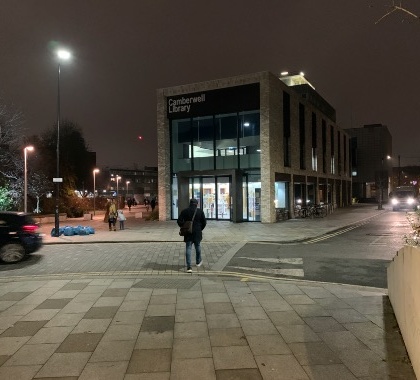
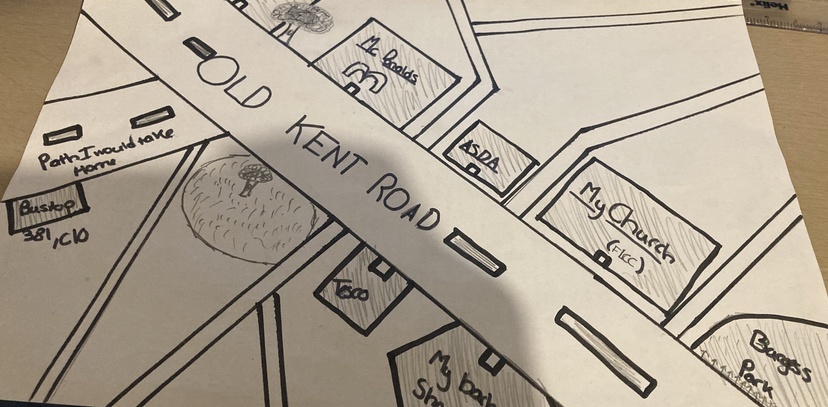
Last year, in the winter of 2021, we worked with 10 young people from the Southwark Young Advisors. The aim was to gain insights and understanding of the young people's everyday lives during this tense period. As the UK returns to a time of stress and restrictions it’s important to be reflect on how difficult the experience of the pandemic has been for many young people, to understand what they feel that they need to help them get by.
As we started the research, in November 2021, London entered a second national lockdown. In December, the restrictions were relaxed but soon, a third national lockdown started in early January 2021, demanding that people in England stay at home, except for limited reasons, and, unlike in November, largely closing schools and colleges.
Our research was based on 10 in-depth interviews (by phone or zoom) and two online focus groups, co-facilitated by the Young Advisors. We asked the young people to send us photos of spaces that they used to go to before March 2020 and spaces in their local area that they have been able to use during the lockdown. We also asked for a photograph of a hand-drawn map of places and spaces locally that are important to them.
The visual component of the research allowed participants to capture their knowledge of local areas, while grounding the interviews in specific places, routes and local experiences. As one of the participants told us:
“When I was drawing the map, I was thinking what are my favourite places there, and what places I usually go to. Started from the top, and slowly walked through like I was walking down the road, and asked where I would stop at. Everything in order. McDonald’s / Asda / my church / my barber shop / Burgess Park. It’s just like when I am usually on that road.”
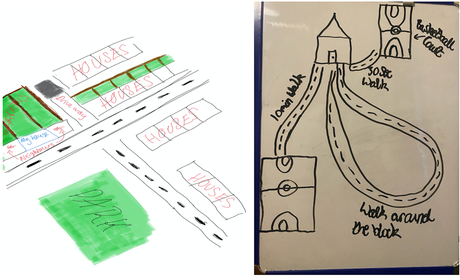
The young people talked at length about the impact that the pandemic has had. Mental wellbeing was a central concern in our discussions. Some mentioned that it has become more common to discuss depression openly among friends.
“I feel disconnected from everybody ... this sense of disconnection ties into the social distancing, and being so focused on social media, and ... your mental health also. We’re not used to doing nothing on a Saturday, or for that long, or not seeing your friends. You feel like you’re losing all of your childhood, the time you could be doing stuff, like even right now. It did get quite depressing, definitely, some of your friends if they are not online, you feel like you are alone. And you just wait for them to be available again, lonely, and depressing.”
For many, the use of digital platforms and social media for most forms of social interaction, including school, resulted in fatigue and a sense of continuous anxiety.
“I haven’t been out at all ... only been to school, then home and homework. I have been using Zoom for online schoolwork and other activities. I’ve had enough of Zoom ... It’s a lot. I wish it could be in- person.”
The lack of daily routines made young people feel disconnected from their local areas. Social distancing and the closure of particular places have put pressure on many: supermarkets, chicken shops and chip shops, McDonald’s, barbers, and churches are all important for young people, serving important social functions.
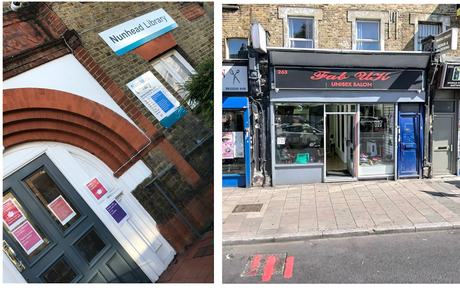
Change in everyday routines made many young people see their local areas differently, as they became more aware of the role played by local places in organising their lives.
“I didn’t realise that having a routine made me happy ... that I like having something I could wake up to in the morning or knowing I had somewhere to go to. For example, school, when we had it before lockdown, there was no such thing as liking school. A lot of the boys who used to complain about it are now the people who complain that they can’t go to school due to lockdown.”
A few said that taking up new routines helped them during the lockdown. The importance of being able to step away from the home cannot be overstated. Some young people started to take more walks in local parks, others hung out with their friends on park benches, and others sat in their parents’ car outside their homes.
“Most of the time when I am outside, I would stand looking at the surroundings, just looking for something to do ... Sometimes when I am bored of being indoors, I would sit in my mum’s car listening to music. It’s way to relax outside of the house.”
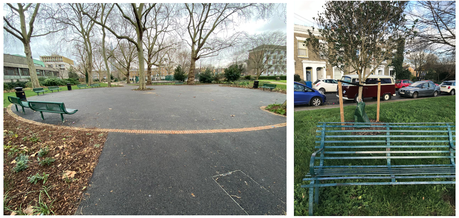
Young people reported a sense of belonging to their local areas, giving various reasons including having friends locally, knowing their way around the neighbourhood and having strong connections to local institutions. The pandemic has restricted many young people to smaller geographies and they have had a limited number of spaces to socialise or build their networks of support.
“Before the pandemic, I really liked where I lived – it’s comfortable to me because it’s very welcoming, with many cultures and really diverse. During the pandemic it felt less open and there is not a lot of green spaces.”
The young people interviewed made suggestions for the support and facilities they need, including more facilities in parks, including outdoor gyms, more youth clubs, better consultation processes that more effectively engage young people, opportunities for internships, apprenticeships and mentoring, more counselling and wellbeing services, and better communication of what is available to young people.
Read the full report here.
This is part of a wider research project exploring everyday life and the impact of COVID-19 in six areas in Southwark going through change, commissioned by Southwark Council.
